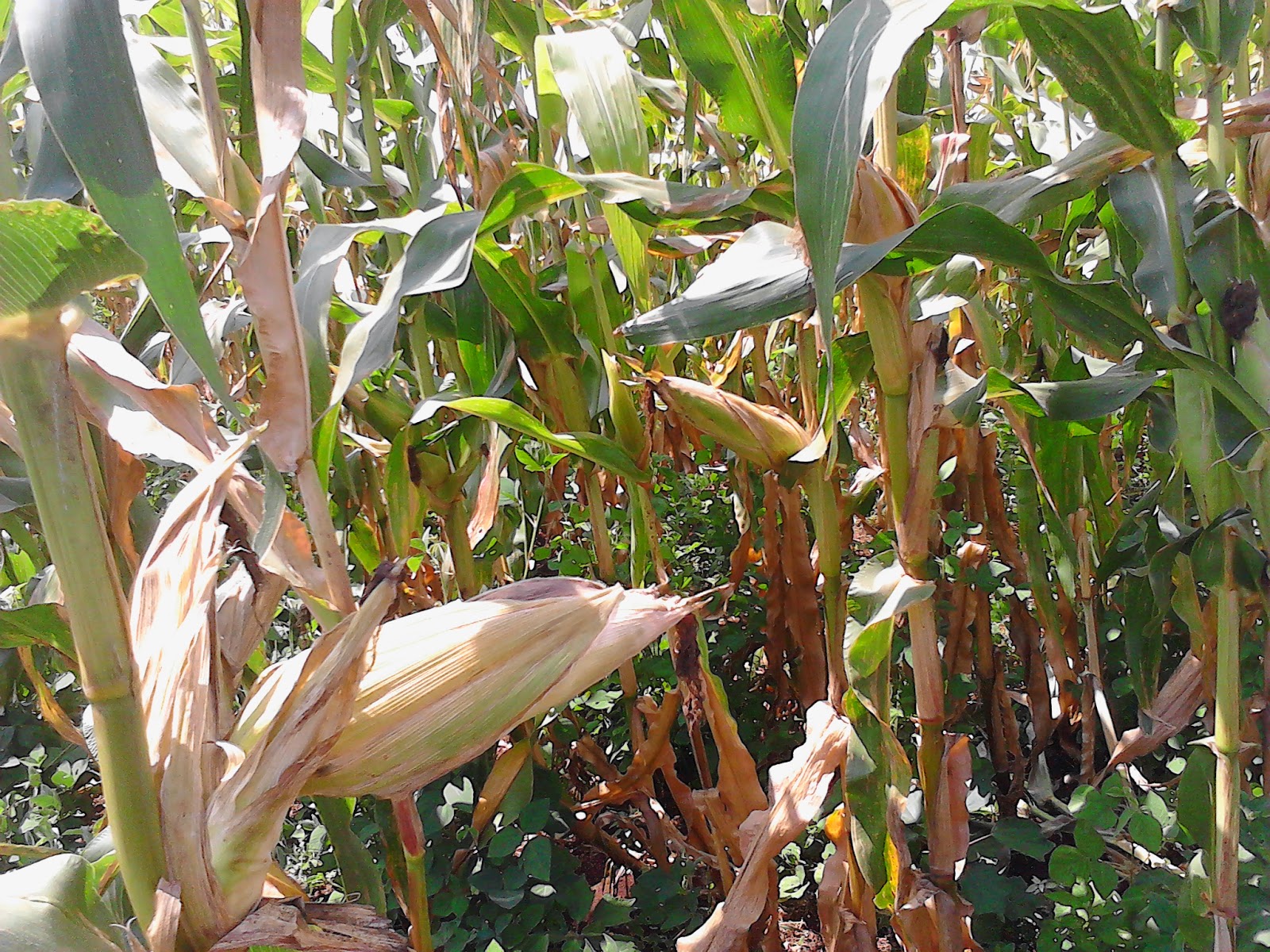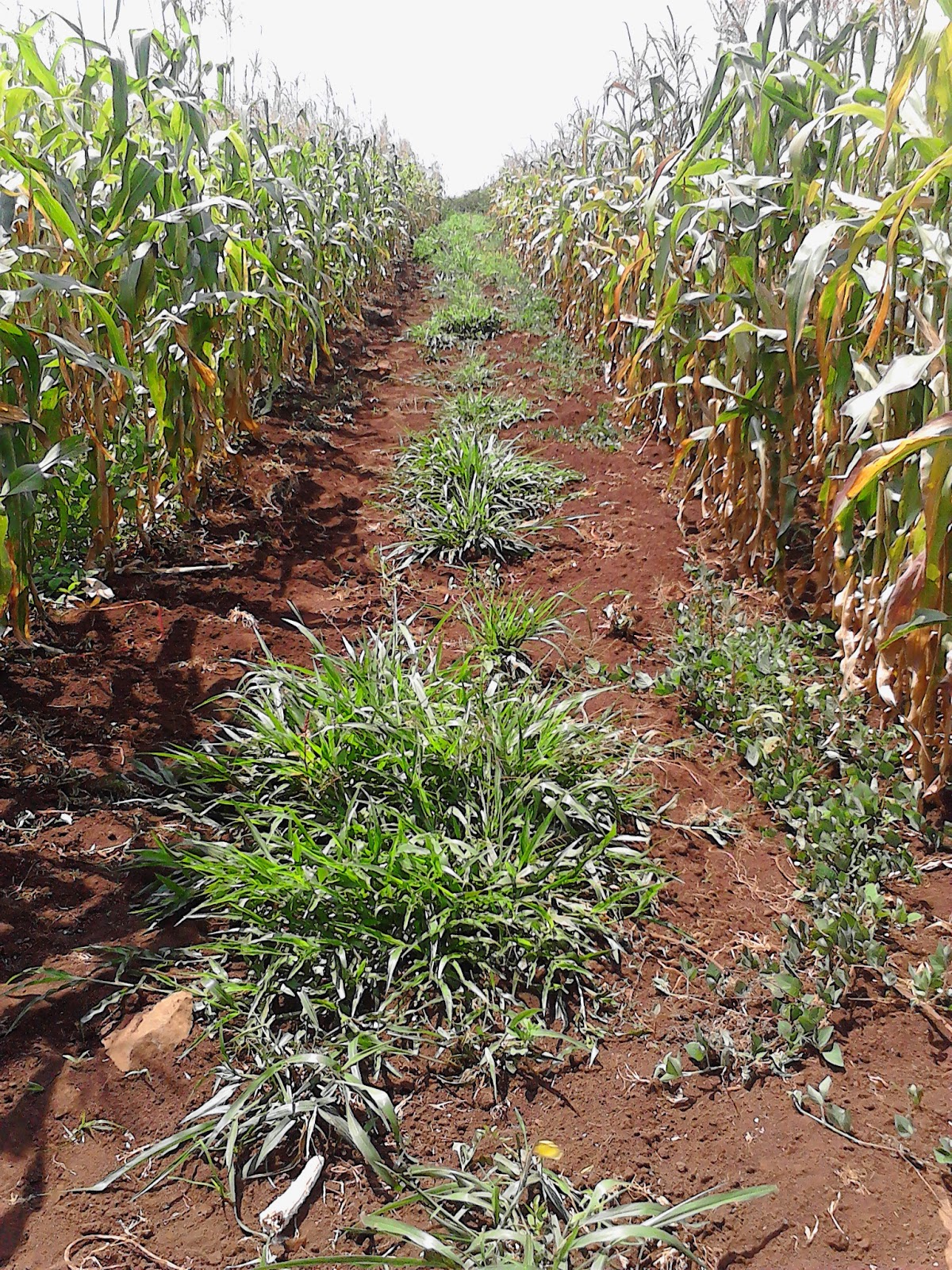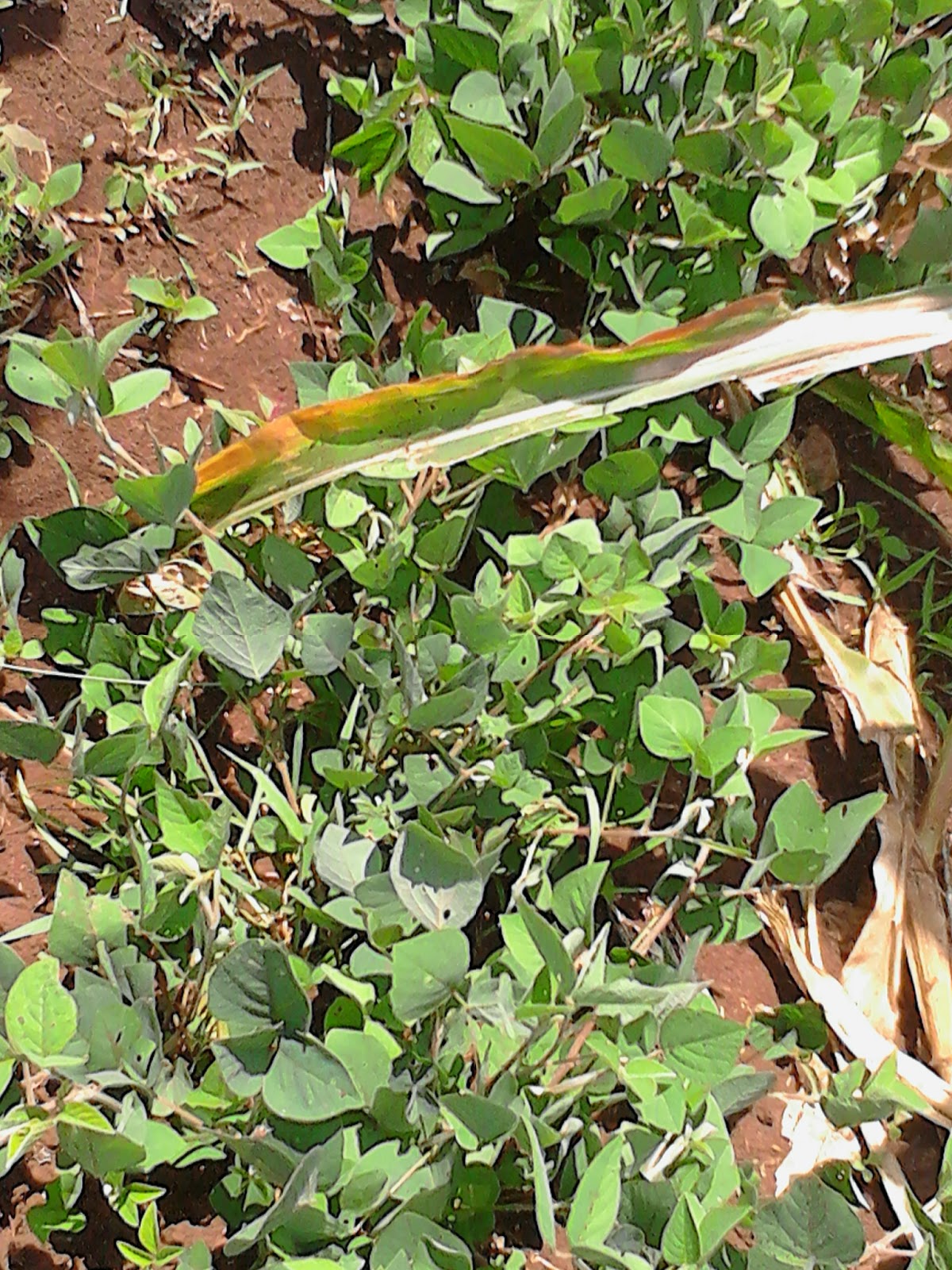 |
| Farmers on a field day training |
The push–pull technology is a strategy for controlling agricultural pests by using repellent "push" plants and trap "pull" plants. For example, cereal crops like maize or sorghum are often infested by stem borers.
Grasses planted around the perimeter of the crop attract and trap the pests, whereas other plants, like Desmodium, planted between the rows of maize repel the pests and control the parasitic plant Striga. Push–pull technology was developed at the International Centre of Insect Physiology and Ecology (ICIPE) in Kenya in collaboration with Rothamsted Research, UK and national partners.
 |
| Maize inter-cropped with Desmodium |
On this field day that was organized by icipe and was attended by a good number of farmers, at least a solution had been witnessed and realized from the demo sites by all farmers present and from the final analysis of the training, it was clear the technology adoption was now home to many. As ALIN, we had the chance to market our Soko+ and Farmis platforms to the farmers who registered with us. Otherwise, You may need to learn more on how push pull technology works:
How Push Pull Works
 |
| Mulato grass |
The push–pull technology involves use of behaviour-modifying
stimuli to manipulate the distribution and abundance of stemborers and
beneficial insects for management of stemborer pests. It is based on in-depth
understanding of chemical ecology, agrobiodiversity, plant-plant and
insect-plant interactions, and involves intercropping a cereal crop with a
repellent intercrop such as Desmodium uncinatum (silverleaf) (push), with an
attractive trap plant such as Napier grass (pull) planted as a border crop
around this intercrop.
Gravid stemborer females are repelled from the main crop and
are simultaneously attracted to the trap crop. Napier grass produces
significantly higher levels of attractive volatile compounds (green leaf
volatiles), cues used by gravid stemborer females to locate host plants, than
maize or sorghum. There is also an increase of approximately 100-fold in the
total amounts of these compounds produced in the first hour of nightfall by
Napier grass (scotophase), the period at which stemborer moths seek host plants
for laying eggs, causing the differential oviposition preference.
However, many of the stemborer larvae, about 80%, do not
survive, as Napier grass tissues produce sticky sap in response to feeding by
the larvae, which traps them, causing their mortality. Legumes in the Desmodium
genus (silverleaf, D. uncinatum and greenleaf, D. intortum), on the other hand,
produce repellent volatile chemicals that push away the stemborer moths. These
include (E)-β-ocimene and (E)-4, 8-dimethyl-1,3,7-nonatriene, semiochemicals
produced during damage to plants by herbivorous insects and are responsible for
the repellence of Desmodium to stemborers.
 |
| Desmodium plant |
Desmodium also controls striga, resulting in significant
yield increases of about 2 tonnes/hectare (0.9 short tons per acre) per
cropping season. In the elucidation of the mechanisms of striga suppression by
D. uncinatum, it was found that, in addition to benefits derived from increased
availability of nitrogen and soil shading, an allelopathic effect of the root
exudates of the legume, produced independently of the presence of striga, is
responsible for this dramatic reduction in an intercrop with maize.
Presence of blends of secondary metabolites with striga seed
germination stimulatory,
4′′,5′′,-dihydro-5,2′,4′-trihydroxy-5′′,-isopropenylfurano-(2′′,3′′;7,6)-isoflavanone,
and postgermination inhibitory,
4′′,5′′-dihydro-2′-methoxy-5,4′-dihydroxy-5′′-isopropenylfurano-
(2′′,3′′;7,6)-isoflavanone, activities in the root exudates of D. uncinatum
which directly interferes with parasitism was observed. This combination thus
provides a novel means of in situ reduction of the striga seed bank in the soil
through efficient suicidal germination even in the presence of grassy host
plants in the proximity.
Other Desmodium species have also been evaluated and
have similar effects on stemborers and striga weed and are currently being used
as intercrops in maize, sorghum and millets.
No comments:
Post a Comment